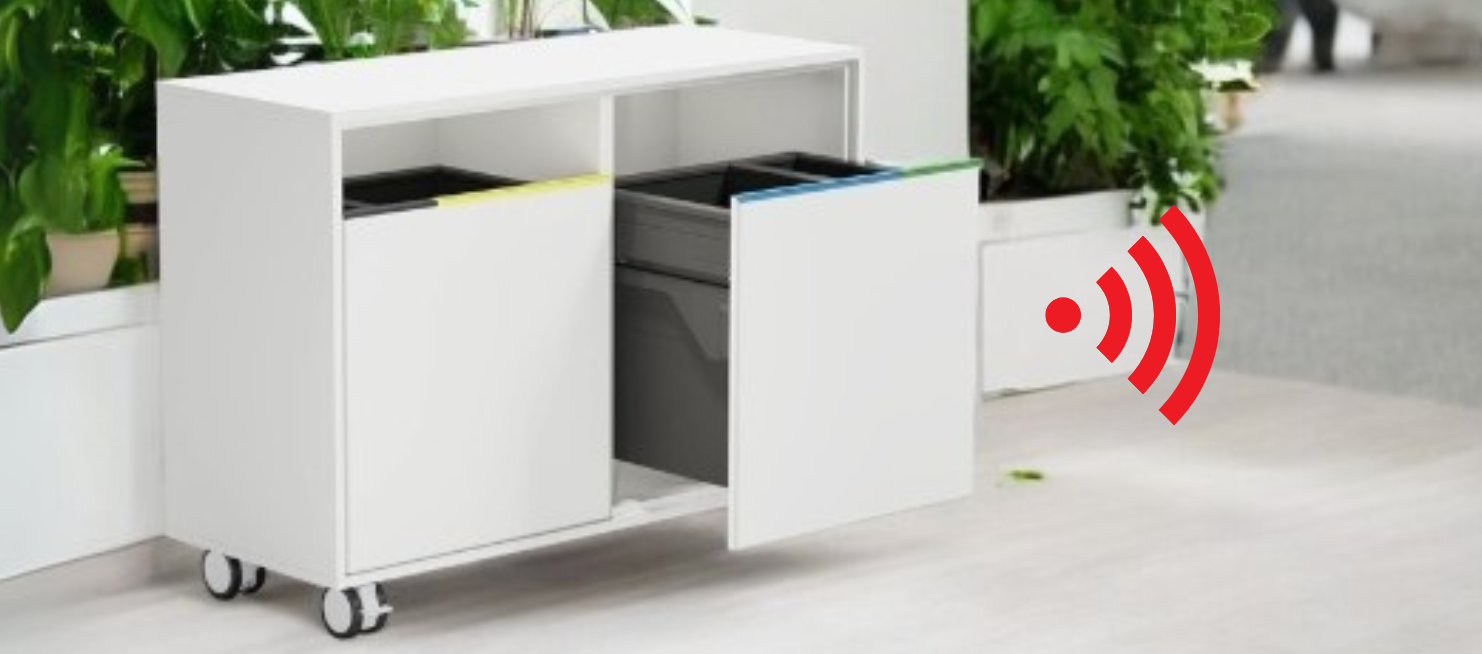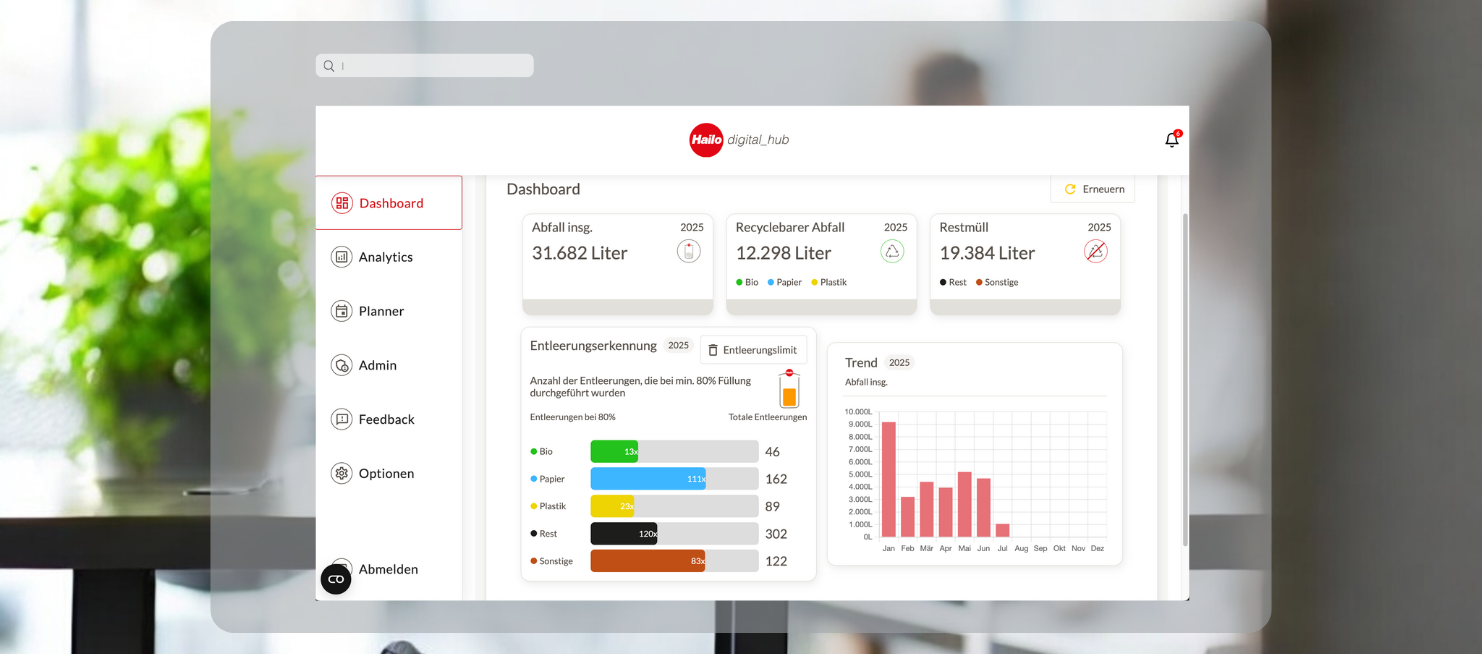Facility Cleaning 4.0 – How Sensor-Based Waste Management Cuts Costs and Optimizes Processes

Cost Pressures as a Driver of Innovation
Cleaning service providers face intense challenges: labor shortages, rising wages, and fierce price competition. Personnel and cost pressures are among the industry’s top concerns. When staff absences occur, operations can quickly falter.
Often, a single cleaner is responsible for hundreds of square meters and numerous bins. If they’re absent, colleagues must compensate or service quality suffers. With low margins in routine cleaning, innovative solutions are needed to stay competitive.
One powerful lever: digitalization especially using sensors and data to streamline cleaning processes. Waste emptying holds particular savings potential: traditionally, bins are emptied on fixed schedules, regardless of fill level. Studies show up to 80% of bins in office buildings are emptied unnecessarily, wasting time, money, and resources.
This is exactly where sensor-based waste management comes in (see: Level sensors for waste containers): Garbage containers are only emptied when they are really full. The cleaning staff saves themselves unnecessary checks and can use their working time more productively. In office cleaning, up to 25% of personnel costs can be saved if waste bins are emptied as needed instead of according to a fixed schedule.
Savings potential and higher efficiency
The effects of this optimized procedure on the cost structure are significant. There round 20-30% of total office cleaning costs If waste emptying accounts for, the savings potential is enormous. Put simply, smart waste solutions help to reduce the effort required to empty waste bins that are barely filled saving time and money for everyone involved. The result? More orders, higher team workload and overall increased competitiveness on the market.
Practical Example
In an office complex with 1,000 workstations, cleaning teams previously emptied over 300 bins twice daily by schedule. After installing fill-level sensors, they discovered only 20% of bins were full at those times. Now, cleaners target only bins signaling a need reducing collections from 300 to about 100 bins daily. This reduced labor time for waste collection by roughly 25%, freeing staff for other tasks like sanitizing touchpoints or floor care. Savings reached tens of thousands of euros in the first year alone.
The increase in efficiency is also being felt internally: Workers who previously spent a good part of their shift checking and emptying barely filled containers can now take on other tasks. The overall cleaning quality is increasing as personnel resources are used more specifically where they are really needed. Reducing the workload in this routine area often increases employee motivation they experience that their work is becoming more effective and that they have more time for the really important tasks. At the same time, the acceptance of new technologies within the team increases when it becomes clear that they help relieve employees and make routine work easier.
A look at current users shows the potential of building cleaning 4.0: Already 7 of the top 10 facility management companies in Germany use smart waste solutions from Hailo digital_hub, a total of over 1,000 systems are in use. These industry pioneers have recognized that digital efficiency can be translated directly into business success.
Operational Benefits:
Sensor data also boosts cleaning quality: teams know exactly where to focus each day, preventing both unnecessary trips and missed overflows. Flexible scheduling accommodates fluctuations in waste volumes e.g., extra waste after events allowing teams to prioritize accordingly.
For customers (or building users), the difference is also evident: offices and spaces look cleaner because full waste bins are emptied in good time no one has to encounter an overfilled kitchen trash can anymore. At the same time, customers are positively noticing that cleaning teams are less disruptive in the building, as unnecessary tours are omitted. The quality of service therefore increases, which promotes client satisfaction.
Last but not least, efficiency also pays off on sustainability a: Fewer trips and fewer used trash bags mean a smaller ecological footprint of the cleaning service — an aspect that is also receiving increasing attention in tenders and among customers. (Read more in the article”Sustainability in waste management — Towards a greener office world with smart waste“.)
Conclusion
Digitalization in cleaning particularly through sensor-based waste management is a model of innovation and cost efficiency. Technology streamlines a traditionally labor-intensive process, benefiting service providers, staff, and clients alike. Smart Waste Technology investments typically pay for themselves quickly through labor savings and new business opportunities.
Ready to embrace Facility Cleaning 4.0 and optimize your processes? Contact us today we’ll show you how Smart Waste Solutions reduce costs and strengthen your competitive position.










